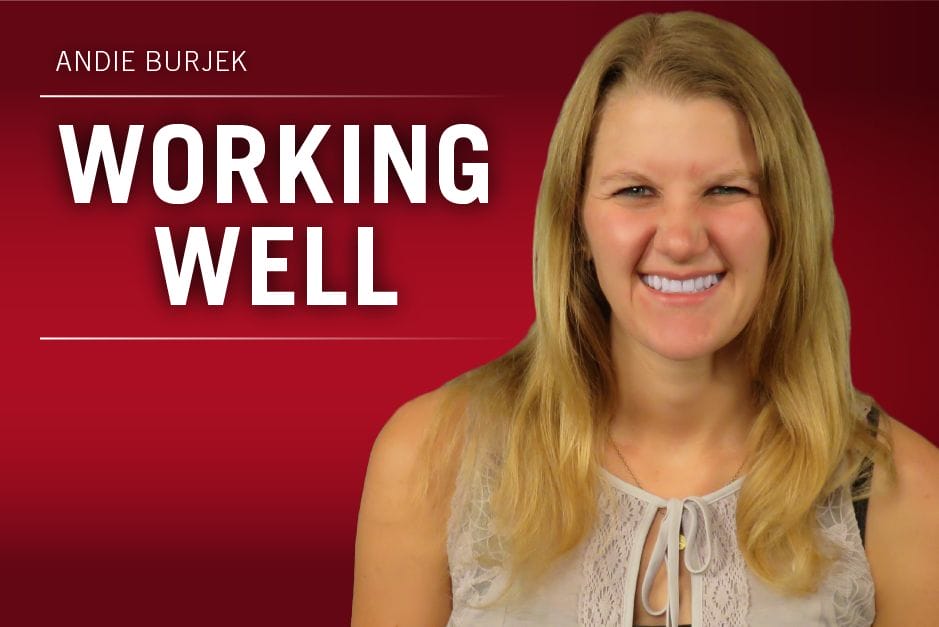Kaiser Health News held a Facebook Live conversation Feb. 13 about living well with dementia, which is “one of the most challenging chronic conditions for individuals and their caregivers,” according to the health news site.
Although this conversation was more about the caregiver and individual as citizens, not as employees, I still found some valuable insights for employers. If none of your employees have this chronic condition, they could be caregivers for someone who does.
Since the aging workforce is a ubiquitous workplace topic nowadays (and, hey, so is chronic disease management and sandwich generation caregivers), it’s worth understanding that conditions like dementia, in most cases, happen after the age of 65.
Some background: the people in the Facebook discussion provided a wide range of points of view. Mary L. Radnofsky is a former professor who was diagnosed 12 years ago with dementia and now acts as an advocate for people with dementia. Yvotte Latty is a journalist and a professor currently caregiving for her mother who has dementia. Nancy A. Hodgson, Helen Kales and Katie Maslow are experts on dementia at the University of Pennsylvania, University of Michigan and Gerontological Society of America, respectively. That combination of personal experience and medical expertise made for a fascinating conversation.
[Also read: Early-Onset Alzheimer’s: Too Soon to Forget]
One point the panelists stressed is that Alzheimer’s, the most common type of dementia, is more than just memory loss. It also means hallucinations, depression, anger and verbal abuse, according to Latty. It’s not like how pop culture often represents it. Movies and books like “The Notebook” or “Still Alice” don’t give people a realistic picture of what dementia looks like. It’s not a quiet, elegant, gradual loss of memory. “There’s nothing quiet about it. It’s been raging,” said Latty.
Radnofsky said that when a person has dementia and is acting in a way that society considers odd, it’s not because that person is trying to misbehave or be difficult. For example, if you tell them something and they throw something in response. “It’s because we’re trying to communicate,” she said, adding that if you’ve gone a decade of being misdiagnosed or misunderstood, sometimes your frustration levels might be high. “If you treat [it] like communication and not a behavior, things will go better in the future,” she said.
Finally, another point I found valuable is a discussion about caregiver challenges, especially isolation. In one example, the panelists said that in the case where a parent with dementia has multiple children, the child closest to the parent can end up being isolated even from their own siblings. Things like a family counseling program is one way to help siblings solve friction among one another.
Communication can also be a challenge for the caregiver, not just the patient. One panelist, both a caregiver and a doctor, talked about when patients lose the ability to communicate, they also lose the ability to advocate for themselves. The caregiver then becomes the main advocate for that patient, but even that can be tricky. The woman found that doctors did not seem to listen to her concerns until they found out she was also a doctor, and what helped her was that she knew the right things to get a response from health care professionals. There needs to be a way for caregivers to know the right language and terminology to use with the patient’s health-care team.
My takeaways for employers: If your employee is a caregiver, he or she could be dealing with social isolation, estrangement from family members, communication barriers/confusion and not knowing what terminology to use with the patient’s physician, among others.
If your employee has dementia or is beginning to show signs of dementia, remember a few things. It’s not just a memory disorder and there could be other symptoms. What you might perceive as poor behavior might be communication. And many of these people are still capable of performing many aspects of their jobs.
Hopefully this helps clarify some misconceptions of dementia. I know it helped me. Since I am not expert on the topic, here are additional resources on more practical steps employers could take moving forward if someone in their organization is impacted by dementia:
- How to Identify, Approach and Assist Employees with Young Onset Dementia: A Guide for Employers
- Dementia Response (Note: this includes a case study of an employer who found out an employee had dementia, the steps they took to offer accommodations and eventually the steps they had to take to ultimately terminate the employee.)
- 4 Takeaways from ‘The Lancet’ Report on Alzheimer’s Disease Burden (Note: This includes a list of caregiver intervention and training programs/ options.)
- The Alzheimer’s-Employment Conundrum
- The Centers for Disease Control and Prevention Alzheimer’s Fact Sheet (Note: This includes some further information on the health risks unpaid, family caregivers have. In 2017, the value of this unpaid caregiver activity is an estimated $230.1 billion, according to the CDC)
Andie Burjek is an associate editor at Workforce. Comment below or email editors@workforce.com.

